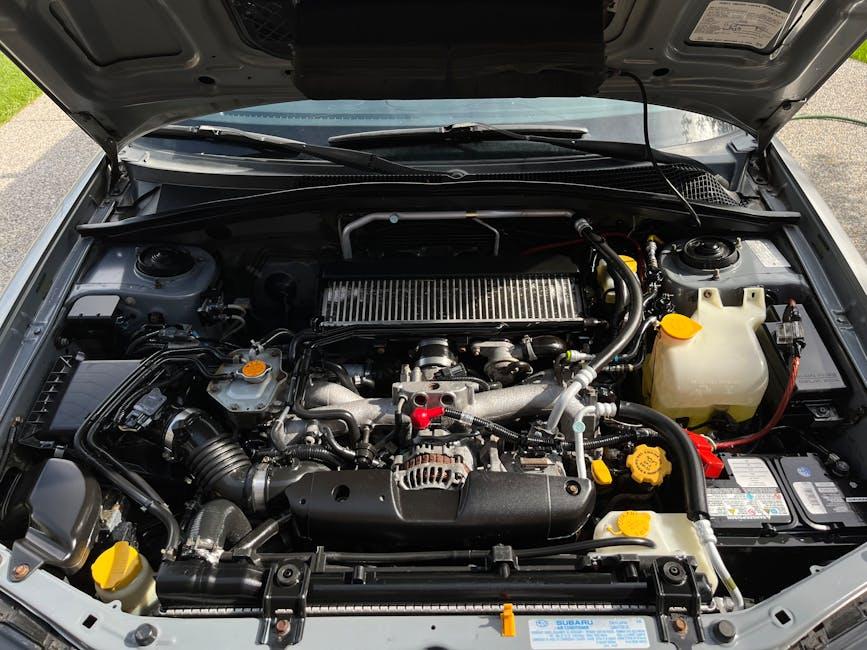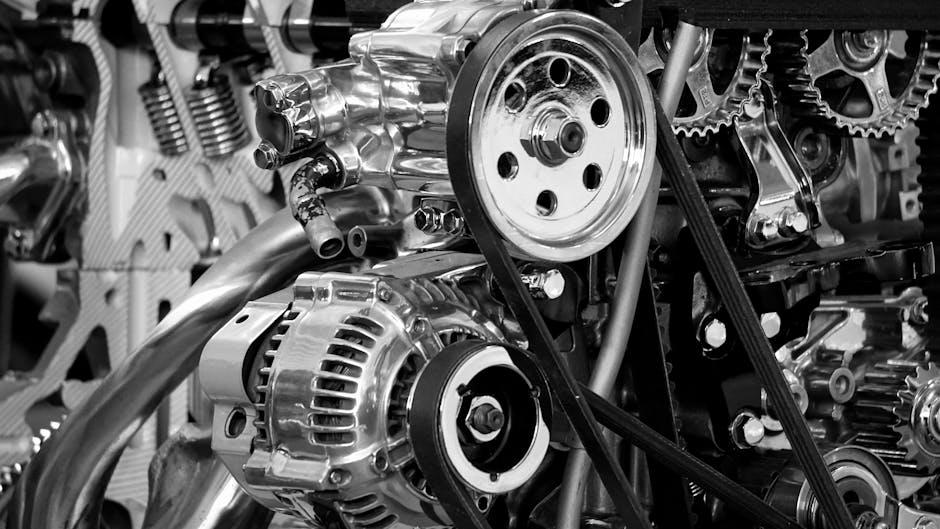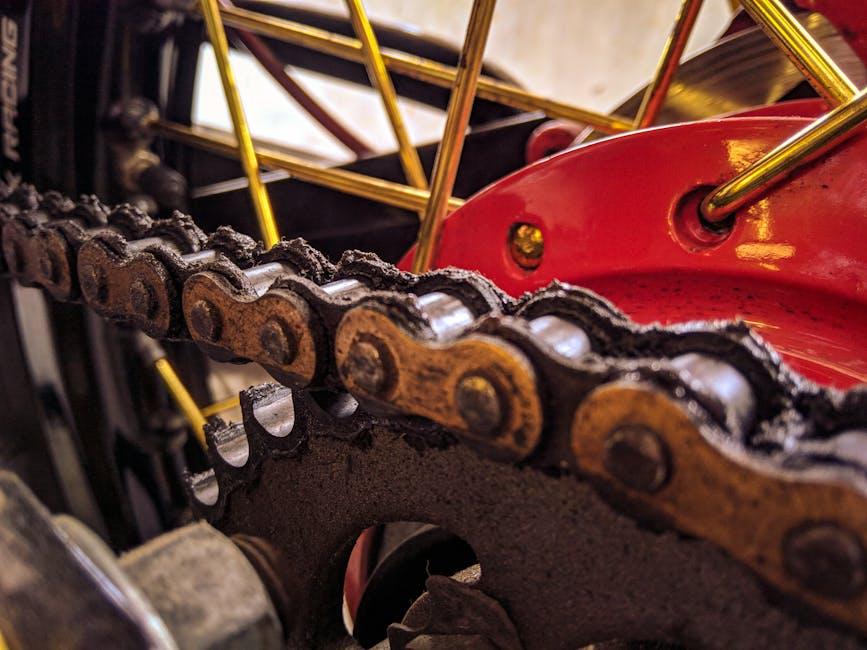Transmission slipping can turn the smooth rhythm of your drive into a frustrating struggle, leaving you wondering when—or if—your vehicle will respond as it should. Whether you’re navigating city streets or open highways, the subtle—or sometimes glaring—signs of a slipping transmission signal a need for attention. In this article, we’ll explore the common causes behind this vexing issue and walk you through practical steps to diagnose and fix transmission slipping, helping you regain control and confidence on the road. Whether you’re a seasoned gearhead or a casual driver, understanding the mechanics behind the slip is the first gear in shifting back to a seamless ride.
Table of Contents
- Understanding the Root Causes of Transmission Slipping
- Diagnosing Transmission Fluid Problems and Solutions
- Exploring the Role of Worn Transmission Bands and Clutches
- When to Consider Transmission Filter Replacement
- The Importance of Regular Transmission Maintenance
- Seeking Professional Help Versus DIY Transmission Repairs
- Q&A
- Future Outlook

Understanding the Root Causes of Transmission Slipping
Transmission slipping often stems from a variety of underlying mechanical or hydraulic issues that disrupt the smooth transfer of power from the engine to the wheels. One common culprit is worn clutch plates or bands, which fail to maintain the necessary friction to shift gears effectively. In automatic transmissions, low or contaminated transmission fluid can impede hydraulic pressure, causing delayed or erratic shifts. Additionally, damaged seals or gaskets may lead to fluid leaks, further compromising transmission performance.
To better understand potential problem areas, consider the following key factors that contribute to slipping:
- Clutch and Band Wear: Causes loss of grip during gear engagement.
- Fluid Issues: Insufficient or degraded transmission fluid affects hydraulic functions.
- Hydraulic Failures: Faulty valves and pumps reduce pressure needed for smooth shifting.
- Electrical Problems: Sensors and solenoids malfunction, confusing transmission control modules.
| Cause | Symptoms | Potential Remedies |
|---|---|---|
| Worn Clutches | Delayed gear engagement, slipping sensation | Replace clutch packs, adjust bands |
| Low Fluid | Overheating, harsh shifting | Flush and refill with proper fluid |
| Hydraulic Malfunctions | Erratic shifting, noise | Inspect valves, repair pump |
| Electrical Faults | Transmission warning lights, strange shift patterns | Diagnose and replace sensors/solenoids |

Diagnosing Transmission Fluid Problems and Solutions
Transmission fluid plays a pivotal role in keeping your vehicle’s gears shifting smoothly. When this critical fluid becomes degraded, contaminated, or runs low, it can lead to a myriad of problems—most notably, a slipping transmission. Common signs to look for include delayed gear engagement, erratic shifting, or unusual noises. To diagnose these issues accurately, start by checking the transmission fluid level and color. Healthy transmission fluid should have a bright red hue and a slightly sweet smell. Dark, burnt-smelling fluid often signals overheating or contamination, which directly contributes to slippage.
Once you’ve identified an issue with the fluid, there are practical steps you can take to restore transmission performance. Consider these solutions:
- Flush and Replace: Remove old fluid and refill with manufacturer-recommended transmission fluid to eliminate contaminants and restore hydraulic function.
- Check for Leaks: Inspect seals and gaskets for signs of leakage, which can cause fluid loss and poor transmission performance.
- Filter Replacement: A clogged transmission filter restricts fluid flow, often resulting in slipping or jerky shifting.
| Fluid Condition | Possible Cause | Recommended Action |
|---|---|---|
| Dark Brown & Burnt Smell | Overheating or old fluid | Complete fluid change and transmission inspection |
| Low Fluid Level | Leak or evaporation | Locate and fix leaks, refill fluid |
| Cloudy or Milky | Water contamination | Drain and replace fluid, check for seal damage |

Exploring the Role of Worn Transmission Bands and Clutches
One of the common culprits behind slipping transmissions lies in the degradation of the transmission bands and clutches. These components serve as the transmission’s grip mechanism, engaging gears and ensuring smooth power transfer from the engine to the wheels. Over time, friction material wears down, bands lose tension, and clutches become glazed or burned, leading to inadequate engagement. Symptoms often include delayed acceleration, erratic shifting, or a noticeable slipping sensation as the vehicle struggles to maintain consistent power delivery.
Identifying issues with these components early can save both your transmission and wallet from costly repairs. When inspecting worn transmission bands and clutches, key indicators to watch for include:
- Unusual noises: Grinding or whining sounds during gear changes.
- Heat buildup: Overheating transmissions due to slipping clutches.
- Inefficient shifting: Hesitation or abrupt shifts in gear.
| Component | Common Issue | Resulting Symptom |
|---|---|---|
| Transmission Bands | Loss of tension | Gear slippage |
| Clutches | Worn friction surfaces | Delayed engagement |

When to Consider Transmission Filter Replacement
Recognizing the signs that your transmission filter needs replacing can save you from costly repairs. If your vehicle exhibits delayed shifting, unusual slipping, or erratic shifting patterns, your transmission filter might be clogged or worn out. Additionally, if you notice burnt-smelling transmission fluid or a distinct decrease in overall transmission performance, it’s time to inspect the filter. These symptoms often indicate that contaminants are obstructing the fluid flow, impacting your transmission’s efficiency.
Routine maintenance intervals vary by manufacturer, but it’s wise to consider filter replacement particularly under these circumstances:
- High mileage vehicles (usually over 60,000 miles)
- Frequent towing or driving in heavy traffic
- Signs of overheating during operation
- Fluid that looks dark or contains metal shavings
Keeping the transmission filter clean and functional ensures optimal fluid circulation, which is essential for smooth gear engagement and long-term transmission health.

The Importance of Regular Transmission Maintenance
Regular upkeep of your transmission is crucial to prevent the slipping issues that can disrupt your driving experience and lead to costly repairs. Neglecting this vital component can result in worn-out clutches, damaged gears, and low fluid levels—all common causes of transmission slipping. By scheduling routine maintenance, such as fluid checks and filter replacements, you ensure that the system remains well-lubricated and free from contaminants, which enhances performance and prolongs the lifespan of your transmission.
Key maintenance practices include:
- Transmission Fluid Inspection: Ensures proper fluid levels and checks for discoloration or burnt smell.
- Filter Replacement: Prevents debris from circulating and damaging internal components.
- Seals and Gaskets Check: Stops leaks that could reduce fluid efficiency.
| Maintenance Task | Recommended Frequency | Key Benefit |
|---|---|---|
| Transmission Fluid Change | Every 30,000 – 60,000 miles | Prevents overheating and wear |
| Filter Replacement | Every 30,000 miles | Keeps system clean |
| Seal Inspection | Annually | Avoids leaks and fluid loss |

Seeking Professional Help Versus DIY Transmission Repairs
When it comes to fixing transmission slipping, deciding between tackling the job yourself or seeking professional assistance can be daunting. For those with mechanical experience and access to the right tools, DIY repairs offer the satisfaction of hands-on problem-solving and can save money. However, transmission systems are intricate, with numerous components that require precise handling. Mistakes can lead to further damage or costly repairs down the line. If you opt for a DIY approach, it’s crucial to have a clear understanding of transmission mechanics and detailed repair manuals, along with high-quality replacement parts.
Professional mechanics bring specialized knowledge and advanced diagnostic equipment to the table, substantially increasing the chances of an accurate and lasting fix. They can quickly identify underlying issues beyond just slipping, such as fluid contamination or electrical sensor failures, which can be easily overlooked by DIY enthusiasts. Here’s a quick comparison of factors to consider when choosing between professional help and DIY repairs:
| Factor | DIY Repairs | Professional Help |
|---|---|---|
| Cost | Lower upfront, potential hidden expenses | Higher upfront, often includes warranty |
| Skill Level | Requires moderate to advanced mechanical skills | No prior experience needed |
| Tools & Equipment | Must have or acquire specialized tools | Mechanics equipped with professional tools |
| Time | Variable; can be time-intensive | Usually faster turnaround |
| Risk | Higher risk of error and additional damage | Reduced risk; professional liability |
Ultimately, weighing these factors against your confidence and circumstances will guide you toward the best approach. Sometimes, a hybrid strategy—starting with troubleshooting and fluid checks at home, then consulting a pro if needed—can optimize both cost and reliability.
Q&A
Q&A: How to Fix Slipping Transmission Issues
Q1: What exactly is transmission slipping?
A: Transmission slipping occurs when your vehicle’s transmission unexpectedly changes gears or fails to stay engaged in the selected gear. It often feels like a sudden loss of power or delayed acceleration, causing the engine to rev without a corresponding increase in speed.
Q2: What causes a transmission to slip?
A: Several factors can cause slipping, including low or dirty transmission fluid, worn out clutch plates or bands, damaged gears, or issues with transmission solenoids. Sometimes, it’s simply a sign that the transmission fluid needs to be replaced or the system needs a tune-up.
Q3: How can I tell if my transmission fluid is the problem?
A: Transmission fluid that’s burning, dark, or smells burnt indicates it’s past its prime. Check your fluid level and condition using the dipstick. Low levels or dirty fluid reduce lubrication and hydraulic pressure, which can cause slippage.
Q4: Can I fix transmission slipping by adding transmission fluid?
A: If the fluid is low, topping it off might temporarily improve performance. However, it’s essential to use the correct type of fluid. If the fluid is dirty or burnt, a full transmission fluid change or flush may be necessary to truly address slipping.
Q5: When should I consider professional help?
A: If fluid changes don’t resolve the slipping, or if you notice additional symptoms like strange noises, delayed gear engagement, or the transmission warning light, it’s time to consult a professional. Internal damage or worn parts often require expert diagnostics and repairs.
Q6: Are there preventive measures to avoid transmission slipping?
A: Regular maintenance is key. Change transmission fluid as recommended by the manufacturer, avoid excessive towing beyond vehicle capacity, and ensure timely repairs to minor issues before they escalate.
Q7: Can driving habits influence transmission health?
A: Absolutely. Smooth acceleration and braking can reduce strain on the transmission. Avoid aggressive shifting, riding the clutch (in manuals), or driving frequently in stop-and-go traffic without breaks.
Q8: Is transmission slipping dangerous?
A: While it might not cause immediate breakdown, slipping can lead to unsafe driving conditions and worsen over time, potentially causing costly damage. Addressing it promptly can save headaches and wallet pain down the road.
Q9: What’s the first step to take if I suspect my transmission is slipping?
A: Start by checking your transmission fluid level and condition. If that appears normal, schedule a professional inspection to pinpoint the root cause before the issue worsens.
Q10: Can software updates or transmission control module resets fix slipping?
A: In modern vehicles, sometimes transmission slipping is related to electronic control issues. A software update or a reset of the transmission control module (TCM) at a dealership or repair shop can sometimes restore proper shifting behavior.
Future Outlook
In the journey to conquer slipping transmission issues, understanding the problem is your first gear toward a smoother ride. Whether it’s a simple fluid top-up or a deeper mechanical fix, taking timely action can save you from costly repairs down the road. Remember, your vehicle’s transmission is the heart of its movement—keep it healthy, listen to its signals, and shift confidently into the road ahead. With the right care and know-how, slipping transmissions won’t stand in the way of your journey. Drive smart, stay informed, and let every gear change be a step toward stress-free driving.

